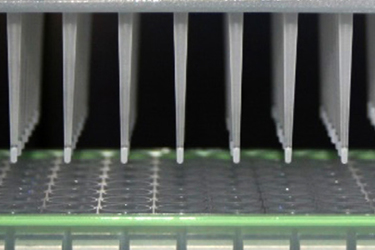Comparison Of Supel™ BioSPME 96-Pin Device To Rapid Equilibrium Dialysis Technique For Determination Of Plasma Protein Binding
By M. James Ross and Olga Shimelis

An important aspect of drug discovery is understanding the interaction of the drug candidate with plasma proteins and lipids. The portion of drug bound to proteins and lipids is referred to as the plasma protein binding (PPB or Fb). Molecular attributes of the drug can provide insight on the number of interactions with protein. In general, organic acids have a single binding site with albumin, whereas, organic bases will have multiple bindings sites associated with glycoproteins.1 In addition to albumin, other proteins commonly associated in drug binding are alpha-1-acid glycoprotein (AAG) and lipoproteins such as very high-density lipoprotein (VHDL) and low-density lipoprotein (LDL).2 When it comes to the pharmacologic effectiveness of a drug, it is the free fraction or unbound fraction (Fu) of a drug that is generally responsible for drug activity as described by the free drug hypothesis.3,4,5
Determining protein binding properties of a drug is important to understand the amount of free drug available in blood. Equilibrium membrane dialysis has been the traditional technique to measure drug protein binding. This technique involves equilibration of the drug rich plasma sample with the drug-free buffer across a membrane, allowing for free drug to migrate across the membrane and preventing the transfer of the protein bound drug into the buffer. This equilibrium is achieved in excess of 24 hours. Other techniques such as rapid equilibrium dialysis further reduce the workflow time down from >24 hours to 6 hours using specifically designed devices.
In this study, we demonstrate how based on solid phase microextraction technology, the Supel™ BioSPME 96-Pin Devices are 3x faster than rapid equilibrium dialysis workflows at similar levels of data accuracy and precision. They remove all phospholipids, deliver reproducible results across batches and each 96-sample device, and allow both manual and automated workflows.
Get unlimited access to:
Enter your credentials below to log in. Not yet a member of Pharmaceutical Online? Subscribe today.
